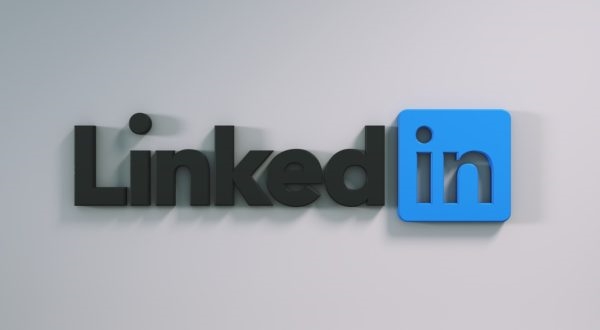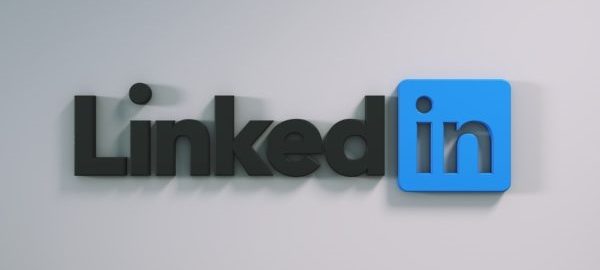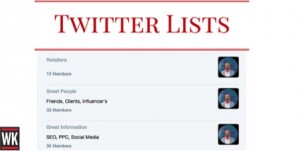— July 23, 2018

QuinceMedia / Pixabay
If you’re looking to kick start your career in digital, or looking for a career change, then LinkedIn is the ideal platform for showcasing your skills and expertise, your work history, your accomplishments and your recommendations. It’s easy to find and apply for jobs, it’s a fantastic tool for networking, and it’s a place where you can instantly communicate with professionals worldwide. In fact, I recently published an article about how to create the perfect LinkedIn profile to land you that digital marketing job.
But apart from the personal benefits, LinkedIn can also be a great tool to add to your business marketing mix. It’s different from other social networking tools like Facebook, Twitter and Instagram in that it’s geared towards a professional market, so you won’t see any selfies or photos of people’s food while scrolling through your newsfeed. Instead, you’re more likely to find news articles, thought leadership pieces, business interviews and business content. So here’s how to get started with LinkedIn marketing for your business:
1. Set up a Business Page
The first step to business marketing on LinkedIn is to set up your LinkedIn business page. Not only is it free, but it’s a great way to promote your business. Think of it as an extension of your website, it helps attract traffic to your site and is a channel on which to promote your products, services and content. A detailed company page will enhance the credibility of your company, can help you establish your brand as a thought leader, and is also a great way to showcase any job vacancies and attract quality candidates. But make sure you fill in every section of your LinkedIn profile in detail, and take as much care with copy and imagery as you would on your website. Use this guide from LinkedIn to help get you started.
2. Employees as Brand Ambassadors
Creating a company page on LinkedIn won’t guarantee you any followers or any engagement. In fact, the simple act of creating a company page won’t get you very far at all! So, start building your audience by using your existing employees as your brand ambassadors. Make sure your employees have up to date LinkedIn profiles, that they state their current workplace as your company and link it to the correct LinkedIn page. Go a step further, and ask them to place a consistent company description within their work history. And while you’re at it, encourage your employees to follow the page, and share or interact with the content that is being published.
In this way, you’re tapping into each of your employees’ networks and expanding your reach, which will enable your LinkedIn business page to grow its audience quicker.
3. Post Quality Content
Keep your page up to date by posting relevant and good quality content, much in the same way as you would on Facebook or Twitter. Use your LinkedIn page to promote blog content, product information or any other relevant third party content such as coverage of your brand on another site, or any news story that fits in with what your brand does.
To make things easier to manage, use a social media management tool like Buffer or Hootsuite, which allow you to schedule your posts in advance and provide useful analytics to measure engagement. Both of these have both free and paid options, so you can trial it out for free before deciding which one is more appropriate for your business.
4. Network and Interact
Reply to any comments left on your posts to show your followers that there is a real person (or people) behind the brand, and interact with other content on LinkedIn posted by other pages or influencers. LinkedIn is primarily a networking tool, so use this to your advantage to build connections and showcase your brand’s thought leadership in the industry.
5. Encourage Long-Form Content
If your employees tend to blog on your company blog, or create thought leadership content of their own, encourage them to post this long-form content on LinkedIn, and to link to your company page or website. LinkedIn allows individuals (not companies) to post long form content, think of it like a personal blog on LinkedIn, and it’s a great way to make yor content go further. Although you can’t publish this content as a ‘company page’ there are still many ways to take advantage of this feature. Not only should your employees link back to the company page or website, but then your business page can further promote this content by sharing it, liking it and posting a comment on it.
6. Join LinkedIn Groups
There are so many ready-made communities on LinkedIn in the form of ‘groups’. Do some research into what groups are out there that focus on a similar topic to what your business does, and request to join these. Once joined, make sure to stay active by posting content, commenting on other people’s content or joining in the conversations. This isn’t, however, a place to spam groups with your website content in the hopes of driving traffic to your site – that’s just a sure-fire way of getting yourself kicked out of a group.
7. Create a LinkedIn Group
I wouldn’t recommend that everyone create a LinkedIn group, but it’s definitely something to consider if you’re operating in a niche market or there aren’t that many existing groups. Firstly, do your homework. Take some time to research existing groups on LinkedIn and whether this market is saturated. If there are too many groups around the same topic already, then I suggest just joining these groups for now and interacting on there, rather than setting up your own.
If you find that there is an opportunity and demand for a new group around your topic, then go ahead and set one up. Building an audience and a constant stream or communication and conversation on a LinkedIn group takes time and persistence, so make sure you can dedicate enough time to managing the group. But done well, this provides another channel on which to promote your brand, products and services, and potentially drive a lot of traffic to your website.
8. Ad Campaigns to Boost Exposure
Most organic digital activity requires time, patience, consistency and dedication. Whether it’s SEO, social media, blogging or PR. But sometimes time is a resource you simply don’t have. In that case, digital advertising is often a viable solution to gain results faster and LinkedIn is no different. A LinkedIn ad campaign can help you boost followers on your company page, it can help you promote an offer, it can help you gain leads, or it can help you fill a job vacancy quicker. LinkedIn offers a variety of ad formats from sponsored content, to text ads, inmail ads and even lead generation forms.
Before you start, make sure you read up on best practice, and take the time to research LinkedIn’s ad platform. LinkedIn ads are relatively expensive compared to other channels, so it’s very easy to burn through your budget. You need to know exactly who you’re targeting so you can be as specific as possible in your targeting options – LinkedIn allows you to go as granular as targeting a specific company or person via your ads. My recommendation, if you’re going to run ads yourself, is to start small so you can learn how the platform works. If you need big results fast, then hire an expert. Check out this guide on running LinkedIn ads before you make a decision.
9. Consider an Upgrade
LinkedIn is primarily a free tool that requires no payment or membership to set up. However, LinkedIn does have a premium business offering at a cost. LinkedIn’s paid business offering allows you to post regular job vacancies, to maximise your lead generation and sales potential, and to reach a much wider audience. The paid option is not for everyone, as it’s a big expense for a smaller business, but it’s definitely worth considering. I would recommend to start with the free version first, explore it, learn how it works for you, and if you find that it’s the strongest communication channel for you, then invest in the paid version. LinkedIn often allows users to trial the paid version for free so give it a go and see if it’s right for you.
Digital & Social Articles on Business 2 Community
(91)
Report Post



